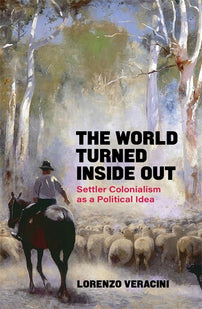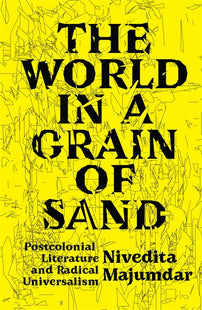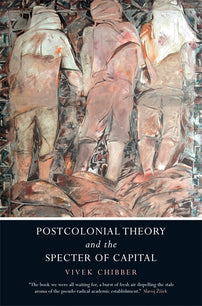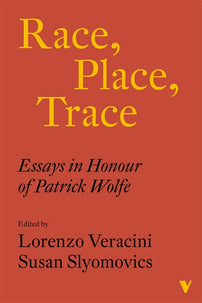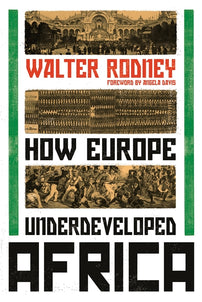Black Worlds Turned Inside Out
Lorenzo Veracini traces Black nationalism and conversations on displacement and diaspora in the era of Reconstruction and its aftermath.

In The World Turned Inside Out: Settler Colonialism as a Political Idea, Lorenzo Veracini outlines settler colonialism as a specific form of social domination. This book uncovers and subjects to critique an autonomous, influential, and coherent political tradition—a tradition still relevant today. It follows the ideas and the projects (and failures) of those who left or planned to leave growing and chaotic cities and challenging economic circumstances, those who wanted to protect endangered nationalities, and those who intended to pre-empt forthcoming revolutions of all sorts, including civil and social wars. The excerpt below is a focused look on Black nationalism in the era of reconstruction.
The World Turned Inside Out is 40% off until the end of September as part of our Student Reading Sale.
*******
Black freedom, emancipation, at least since the War of Independence, had been an unmistakably revolutionary demand; ‘forty acres and a mule’ was a revolutionary proposition especially because the acres and the mule were to be in the South, and because freed slaves were to be settled on the properties of expropriated landlords. In an important sense, Reconstruction was the antithesis of relocation as a political possibility because it envisaged emplaced change. But Reconstruction did not last, and a settler-colonial body politic reacted violently against a revolutionary experiment. Jim Crow was the reactionary outcome of defeated emplaced change. Displacement was then considered again, and re-emerged as an alternative. The black ‘Exodusters’ of 1879–80 were fleeing the South after the end of Reconstruction. They aimed for Kansas. Their ‘great migration’ of 1879 involved some 50,000 individuals.1
But there had been other exoduses. Liberia itself was imagined as a possible world turned inside out: an alternative to revolution, and an alternative that was appealing both to those who feared and loathed revolution and to those who yearned for it but believed it was unlikely. On the one hand, House Speaker Henry Clay would say that displacement to Liberia would ‘rid our country of a useless and pernicious’ population (in other words, it would neutralise a possible revolution); on the other, as one freedman who would move there noted in a letter, ‘We love this country [the United States] and its liberties, if we could share an equal right in them; but our freedom is partial, and we would have no hope that it will ever be otherwise here’.2 The two positions could not have been more different – and yet they would converge on displacement.3
The American Colonization Society did not promote a self-sovereign experiment; it was, after all, primarily in the business of deporting people. But the black settlers always had a very clear understanding of their sovereign prerogatives, which they saw as emanating from their collective displacement. They even drew up a compact on the first ship in 1820 (it was quashed). The ACS retained dictatorial powers, but the prospect of asserting the settlers’ sovereignty was on the table even before arrival. In the 1840s and 1850s there was a shift, and migration by freedmen and ‘mulattoes’ was then paralleled by the migration of slaves manumitted for the purpose of ‘colonization’ to Africa.4 These latecomers were, in a sense, immigrants to Liberia, not settlers: uneducated, unlike their predecessors, and poorer. The original settlers had even often paid for their passage. By the 1850s, Liberia had emancipated itself from ACS oversight and indigenous strategic threats, and a settler society had emerged.
Britain recognised Liberia’s independence immediately and assumed that recognition would facilitate favourable terms of trade; but the United States only recognised Liberia fifteen years later. Then again, settler independence was no revolution, and the ACS was ultimately prepared to relinquish its responsibilities. Obscuring the existence of indigenous Liberians, the declaration of independence began: ‘We the people of the republic of Liberia were originally inhabitants of the United States of North America’, and concluded with the following passage: ‘All hope of favourable change in our country was thus wholly extinguished in our bosoms, and we looked with anxiety abroad for some asylum from the deep degradation’.5 All hope of change in one location had disappeared; displacement had been the alternative.
Nearby, Sierra Leone had also been imagined as a possible world turned inside out born in a revolutionary crisis.6 Many of the colonists had come from Nova Scotia, where black Loyalists had become a landless proletariat. Disappointed promises, combined with a few racial pogroms, had made calls for their relocation ever more urgent. Displacement to Sierra Leone was on offer, and many prospective colonists embraced this possibility, believing that they would enjoy political rights underpinned by more British promises. But they wanted land and liberty under their own government, while the British abolitionists who ran the Sierra Leone Company disagreed strongly, especially on the last point. A ‘second collective migration’, a reverse ‘middle passage’ back to Africa, thus ensued.7 The black colonists in Sierra Leone found that they had to fight for their rights – land allocation in Freetown was slow – and that their ability to represent themselves was curtailed by the Company’s authority. They had been told that land would be free, but the Company expected a quitrent. Petitions followed. Some settlers eventually tried to stage a coup and take over the colony.8 They had wanted what the revolutionaries in Haiti had also wanted, even if it was to be somewhere else, but were defeated. Other deported communities were dumped in the country afterwards: exiled Maroons from Jamaica, and ‘recaptives’ freed from slavers who were circumventing the British ban on the slave trade. Afterwards, Sierra Leone became yet another colony subjected to unrestricted metropolitan authority.
But Liberia still remained a possible world turned inside out. In the 1920s, Marcus Garvey had a Liberia plan. He wanted the Universal Negro Improvement Association to settle Africa by way of Liberia with up to a million migrants.9 But the Americos (the descendants of the original settlers then in control of Liberia) had no Garvey plan, and preferred their own rule. Likewise, W. E. B. Du Bois always liked Liberia, even though he did not like Garveyism and preferred revolution. His ironic description of Garvey’s plan was: ‘Give up! Surrender! The struggle is useless’.10 Garveyism ultimately failed in its Liberia bid, as in its search for other sovereign displacements. The aim of Garveyism was a United States of Africa – a polity that would protect the interests of black people everywhere. Garveyism argued that African-American nationalists should abandon revolution in the United States and focus on Africa or another space to be carved out elsewhere as an alternative.11
Much later, Malcolm X’s political trajectory, and his progressive alienation from the Nation of Islam, epitomised the confrontation pitting the possibility of voluntary displacement against revolution. Malcolm X’s internationalist rhetoric, especially after his travels to Africa and the Middle East, had become ever more incompatible with the Nation of Islam’s separatist line.12 But the prospect of establishing a separate polity in an unspecified location somewhere in ‘the South’, as compensation for slavery, was still alive, and the Nation of Islam, an heir to Garveyism, was closely linked to it. Exodus – collective sovereign displacement – remains significant in this tradition, and in 2021 New York Times bestselling author Charles M. Blow released a call for ‘as many Black descendants of the Great Migration as possible’ to return to the South ‘with moral and political intentionality’ in order to deal with racism once and for all.13
Back in 1974, ‘Afrofuturist’ film Space is the Place, written by Sun Ra and Joshua Smith and directed by John Coney, also explicitly rehearsed the opposition between displacement and revolution.14 Set in the early 1970s in Oakland, California the movie tells the fictional story of the way displacement to another planet becomes the local African Americans ‘alter-destiny’. Sun Ra has visited an inviting and exotic alien planet and has decided to ‘bring black people’ there, so that they can ‘thrive without white people’. He travels back to Earth and challenges the ‘Overseer’, a corrupt black leader. Sun Ra opens an ‘Outer Space Employment Agency’ in the ghetto; he is recruiting potential colonists, and uses his music to proselytise. Eventually, Sun Ra convinces some local youth. At first they are reluctant, perhaps they expect change to happen where they are, but they are finally convinced by his logic: they ‘do not exist in their society’ and must depart. They then help Sun Ra overcome a few white aerospace technicians from NASA. After his people magically gather on his spaceship and depart, Earth explodes. It had it coming.
1 Nell Painter, Exodusters: Black Migration to Kansas after Reconstruction (New York: Norton, 1976).
2 Cited in David Brion Davis, Antebellum American Culture: An Interpretive Anthology (University Park, PA: Penn State Press, 1997), p. 285.
3 James Ciment, Another America: The Story of Liberia and the Former Slaves who Ruled It (New York: Hill & Wang, 2013); Tunde Adeleke, Unafrican Americans: Nineteenth-Century Black Nationalists and the Civilizing Mission (Lexington: University Press of Kentucky, 1998); Tom W. Shick, Behold the Promised Land: A History of Afro- American Settler Society in Nineteenth-Century Liberia (Baltimore: Johns Hopkins University Press, 1980).
4 Ciment, Another America, pp. 54–5, 102.
5 Ibid., pp. 95, 96.
6 Maya Jasanoff, Liberty’s Exiles: American Loyalists in the Revolutionary World (New York: Knopf, 2011), p. 7.
7 Ibid., p. 283.
8 Ibid., pp. 304–5.
9 See Ciment, Another America, p. 159.
10 Cited in ibid., p. 156.
11 On black nationalist ‘post–colonization’ movements, see Edwin S. Redkey, Black Exodus: Black Nationalist and Back-to-Africa movements, 1890–1910 (New Haven: Yale University Press, 1969).
12 See Manning Marable, Malcolm X: A Life of Reinvention (New York: Viking, 2011).
13 Charles M. Blow, The Devil You Know: A Black Power Manifesto (New York: Harper Collins, 2021). See also Emily Raboteau, Searching for Zion: The Quest for Home in the African Diaspora (New York: Atlantic Monthly, 2012).
14 See Mark Bould, Science Fiction (Abingdon: Routledge, 2012), p. 175.
[book-strip index="1" style="display"]